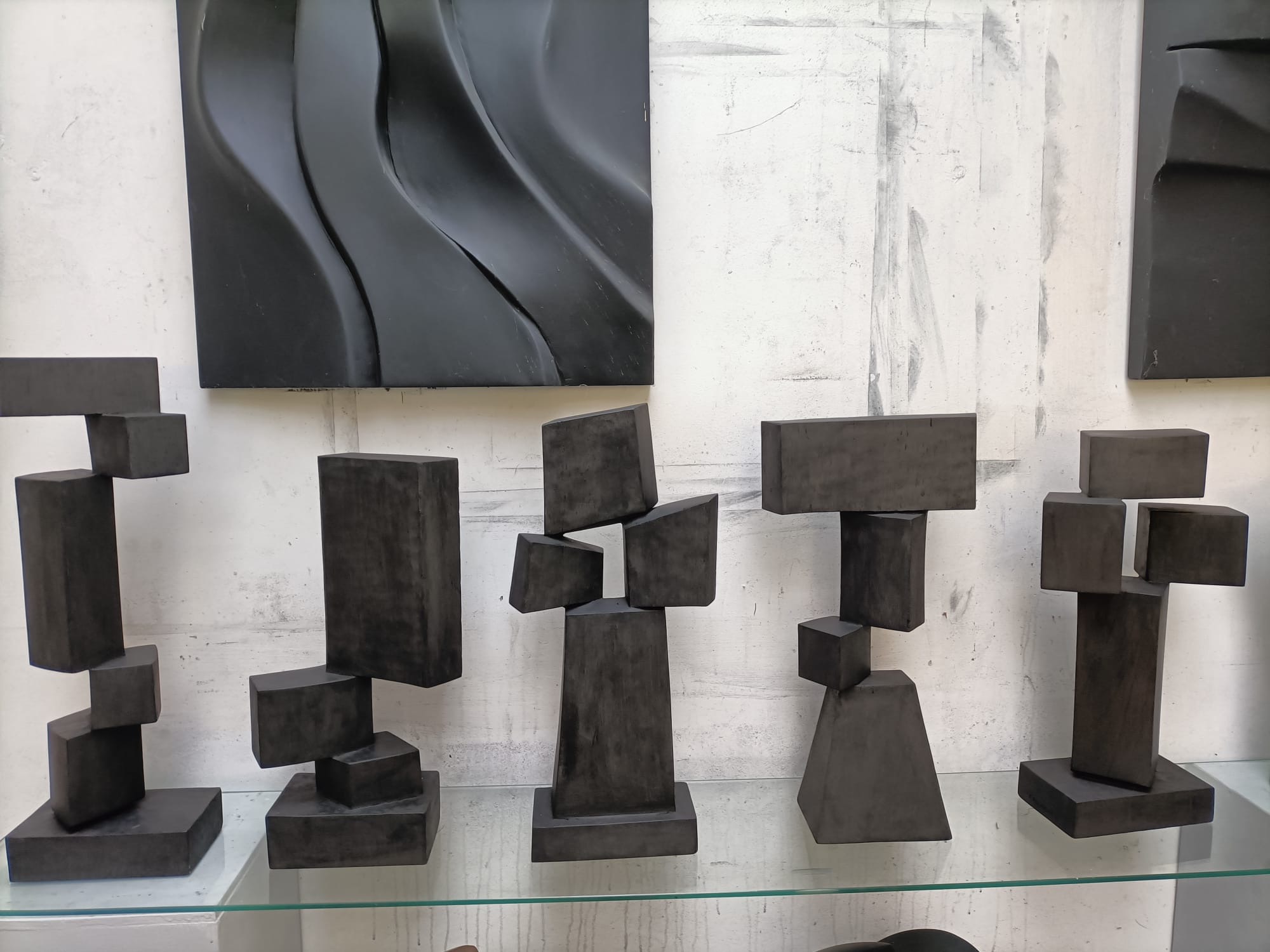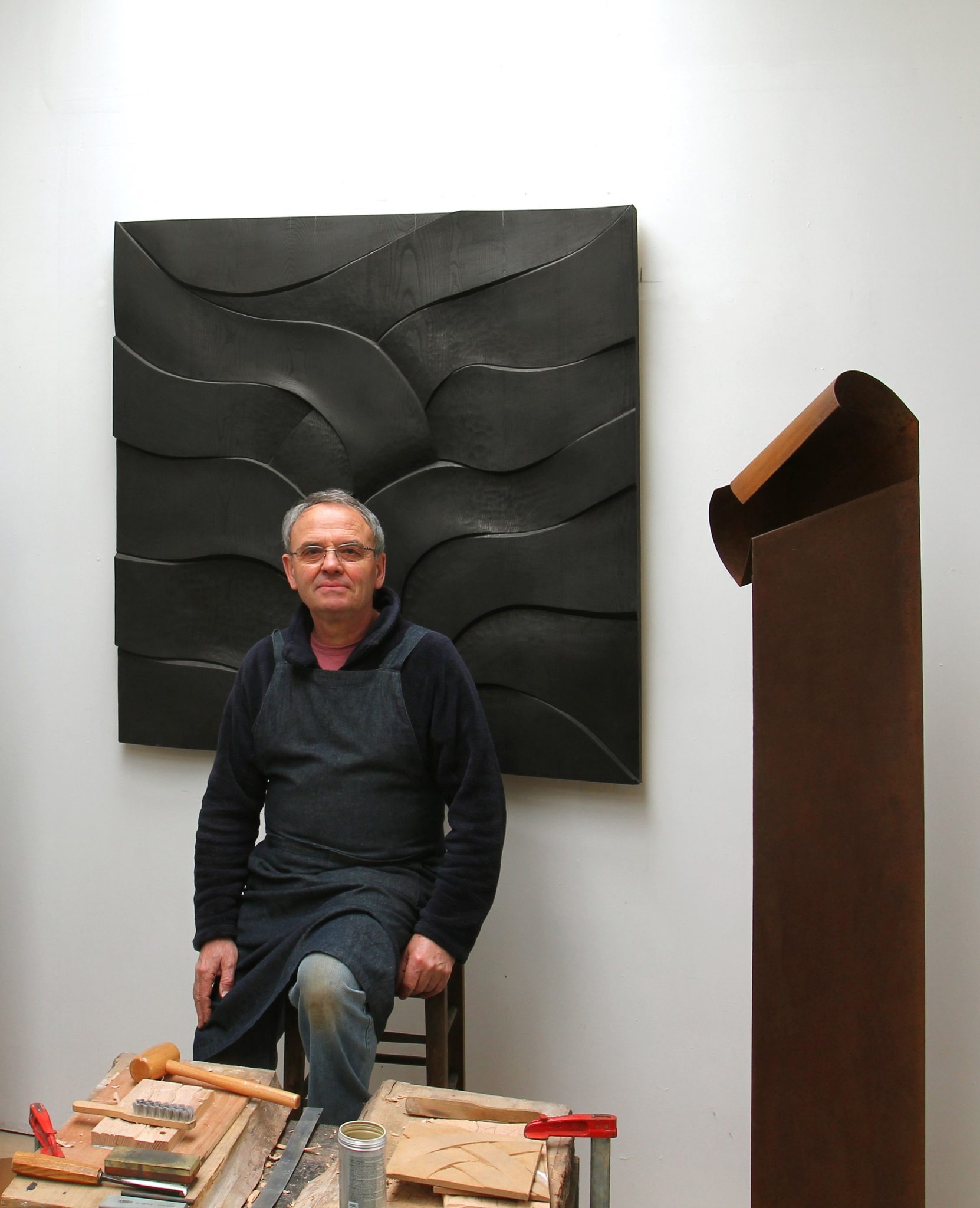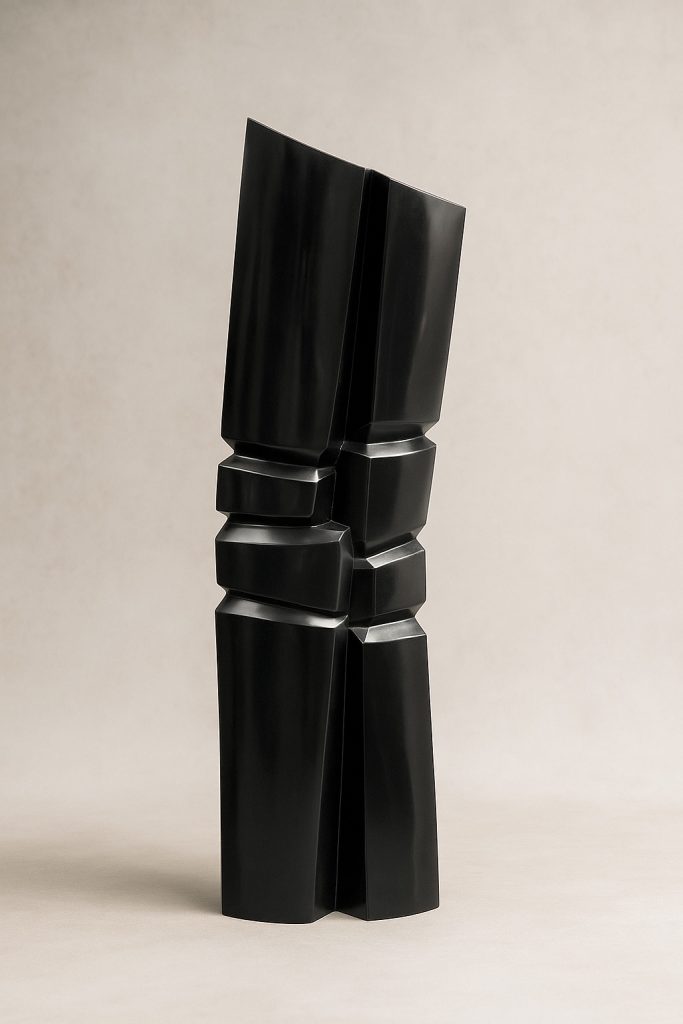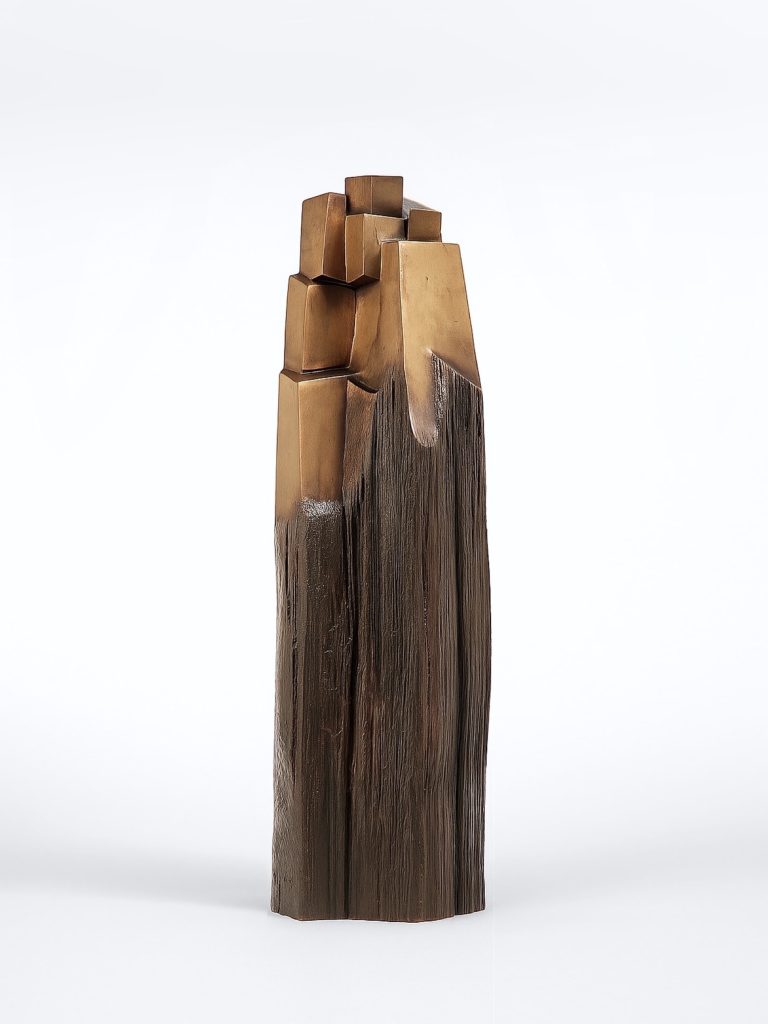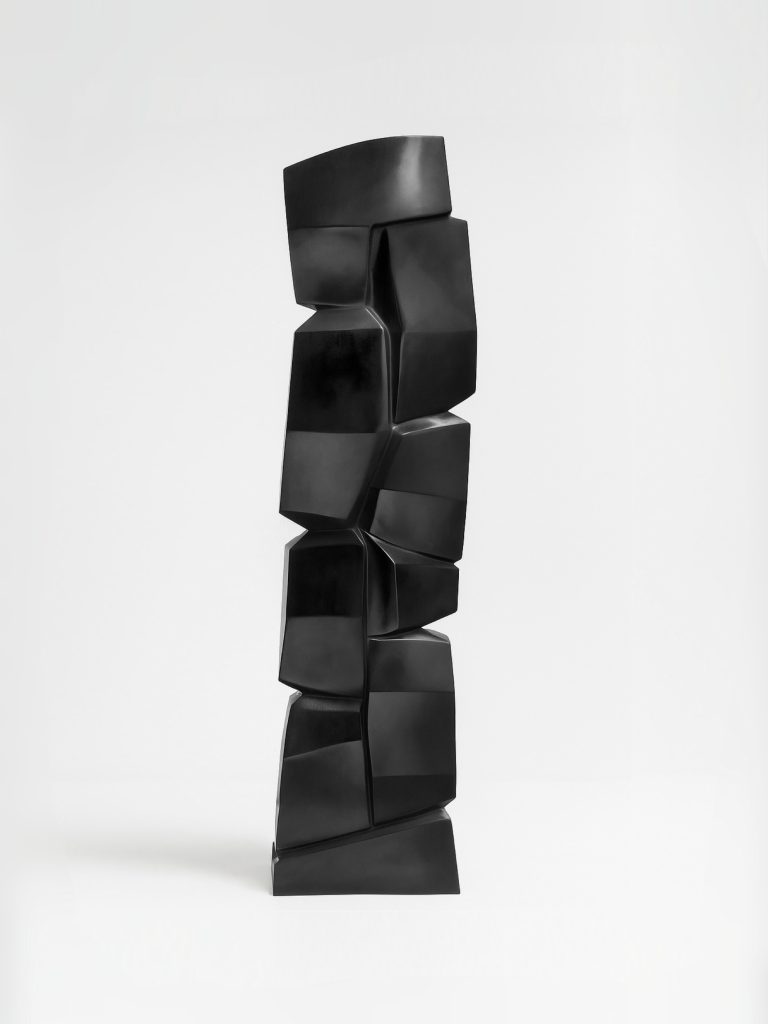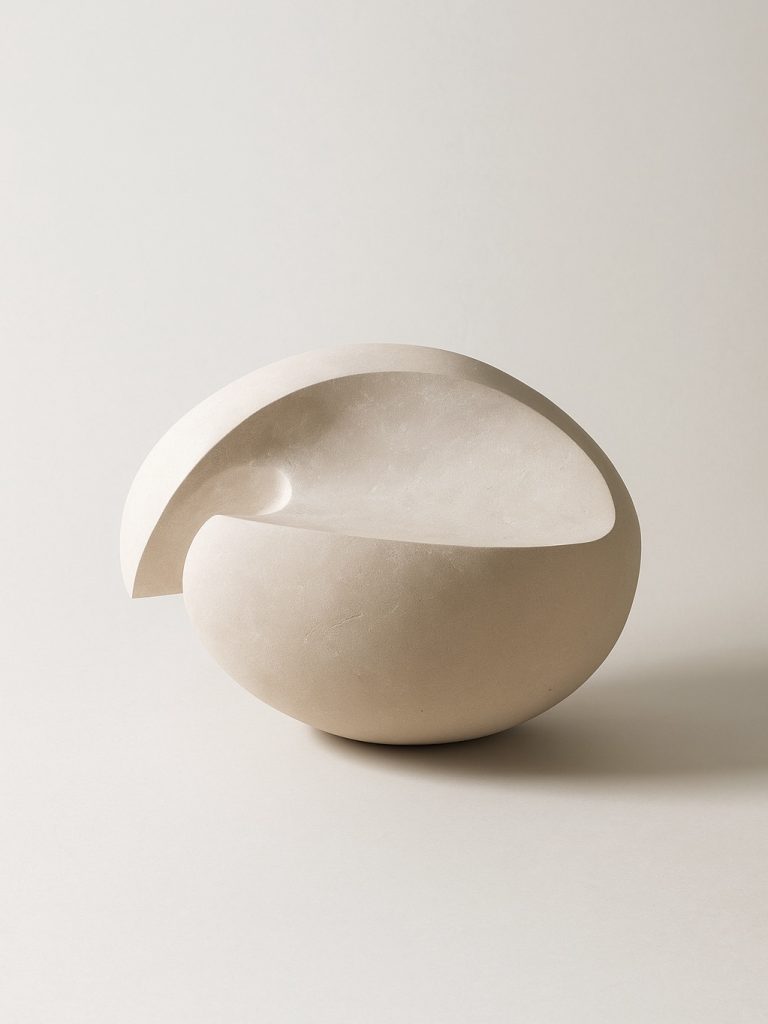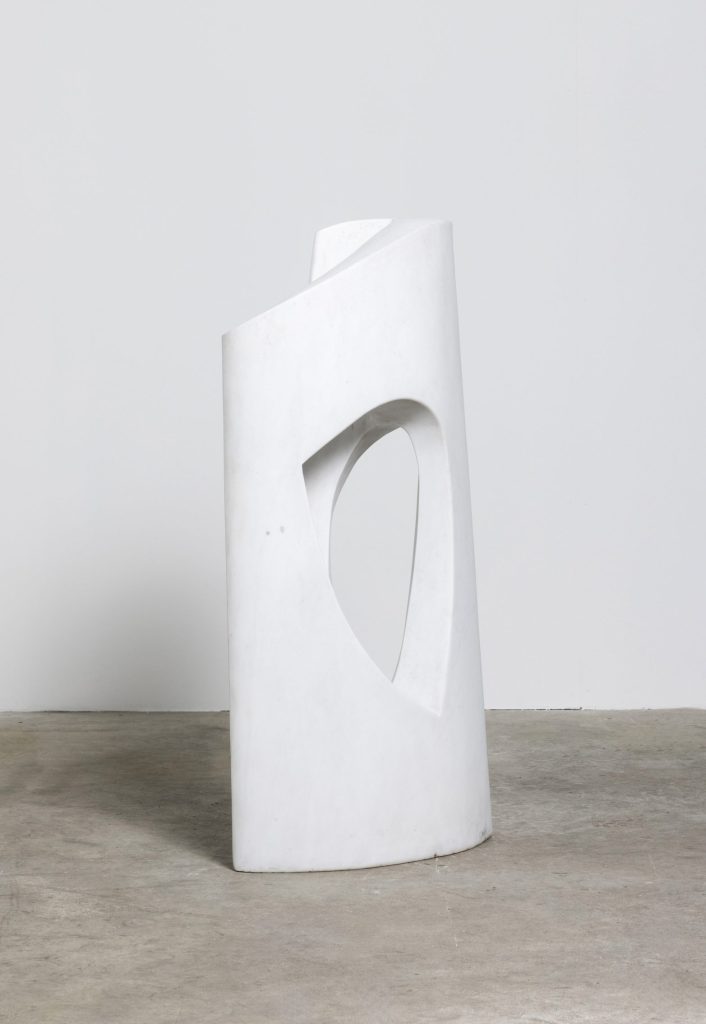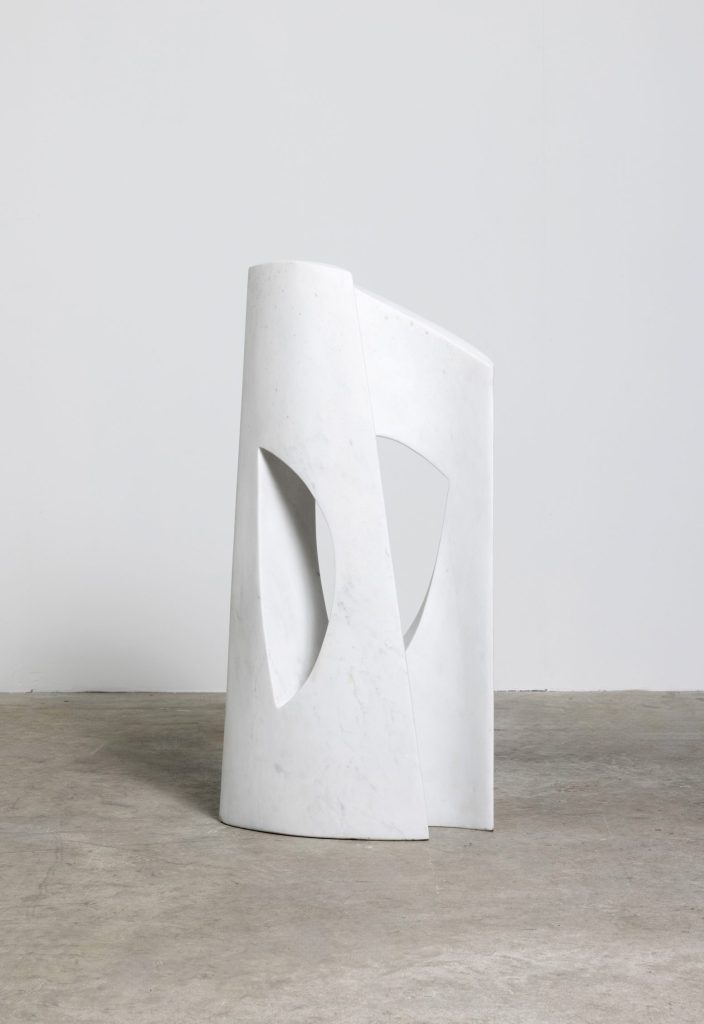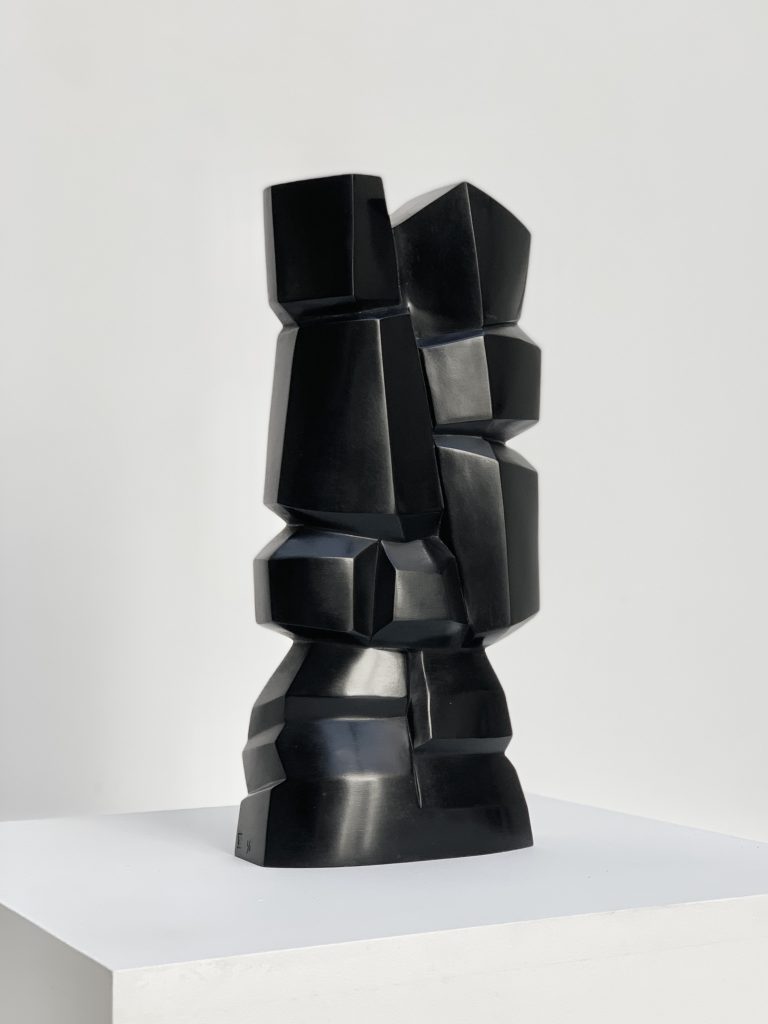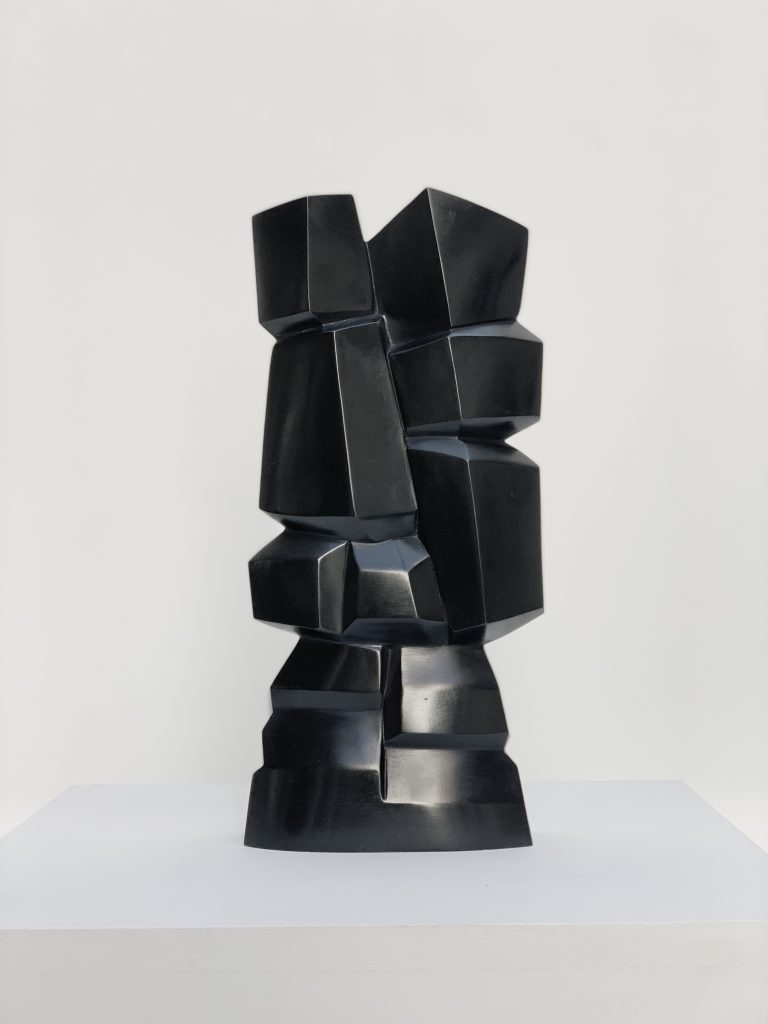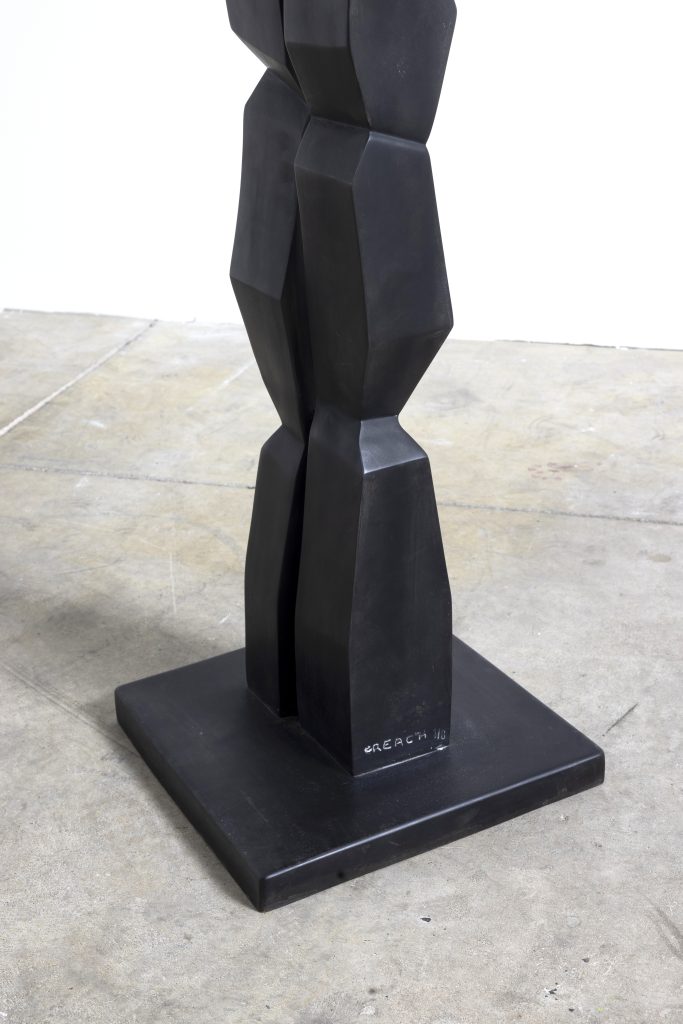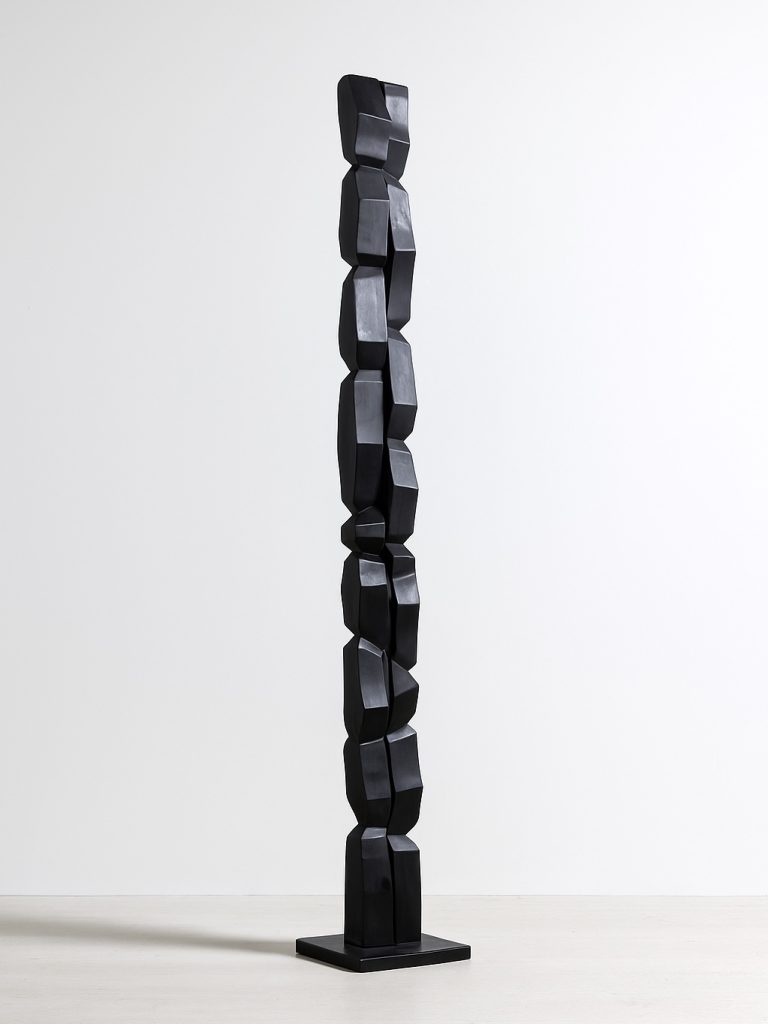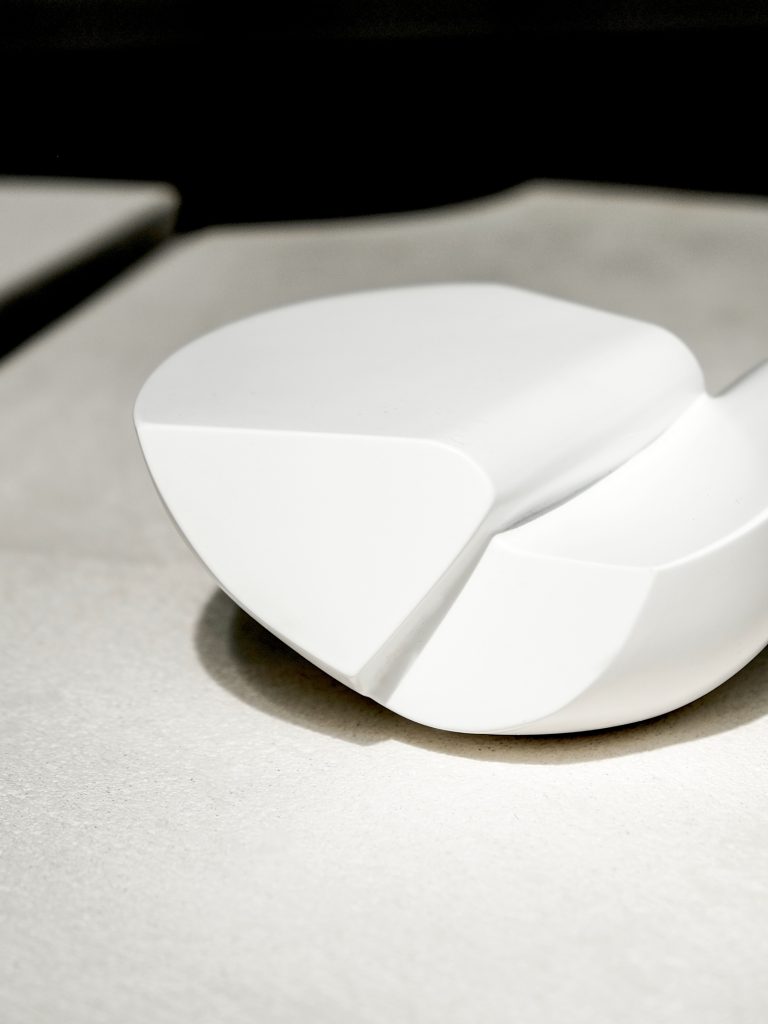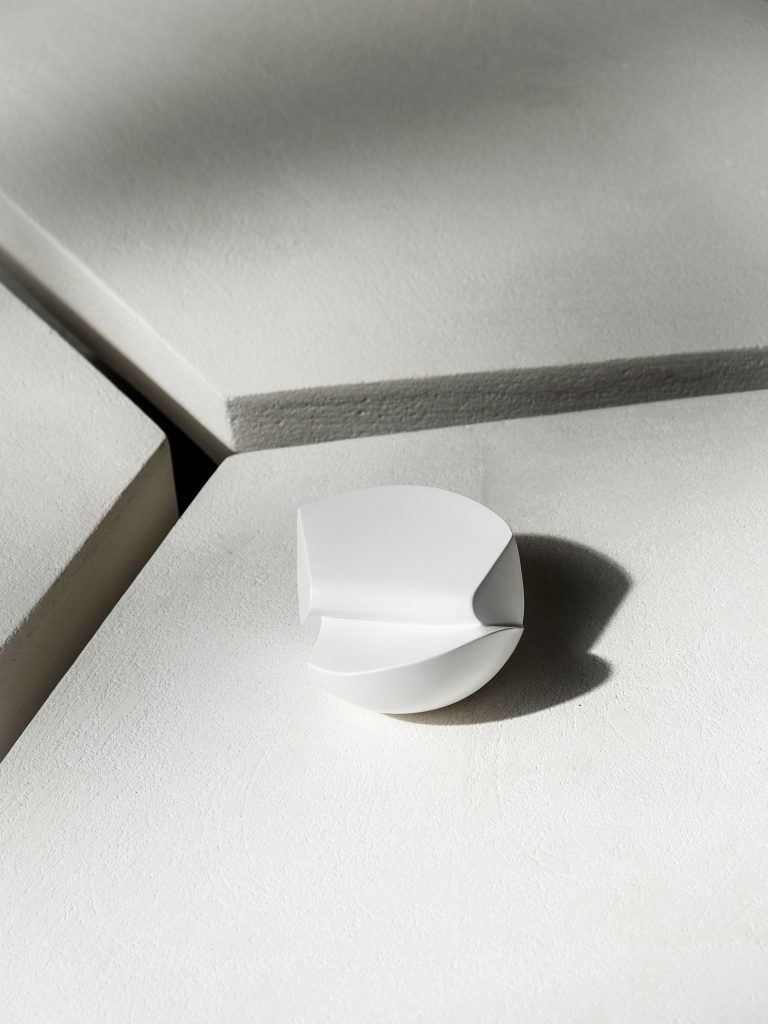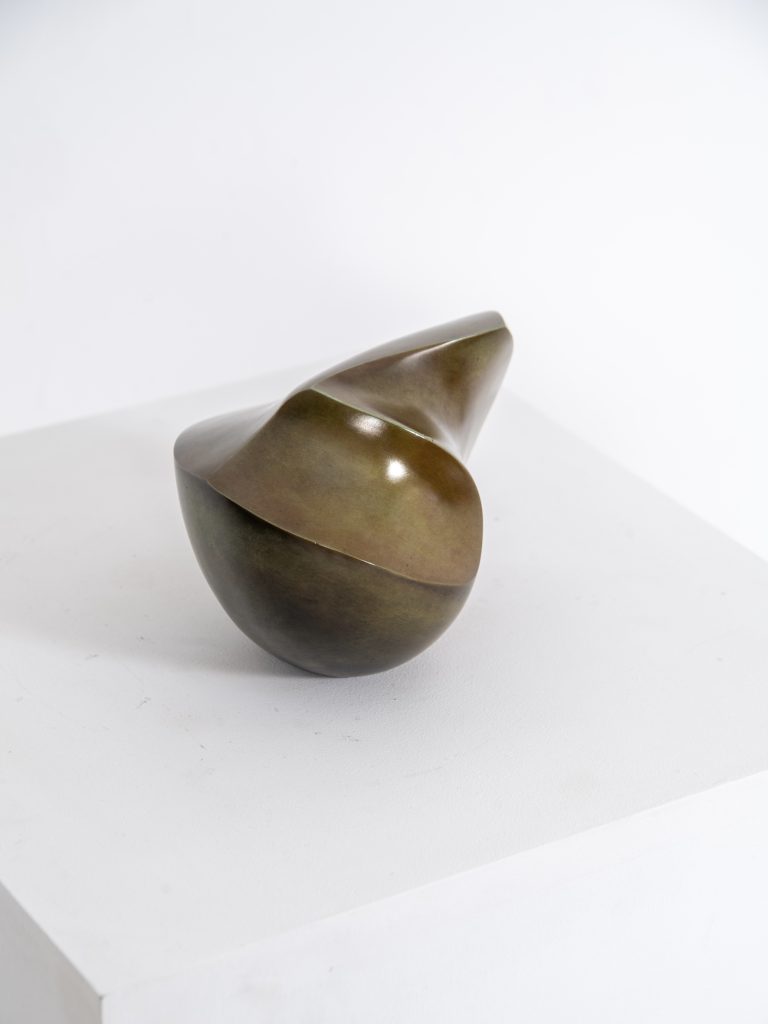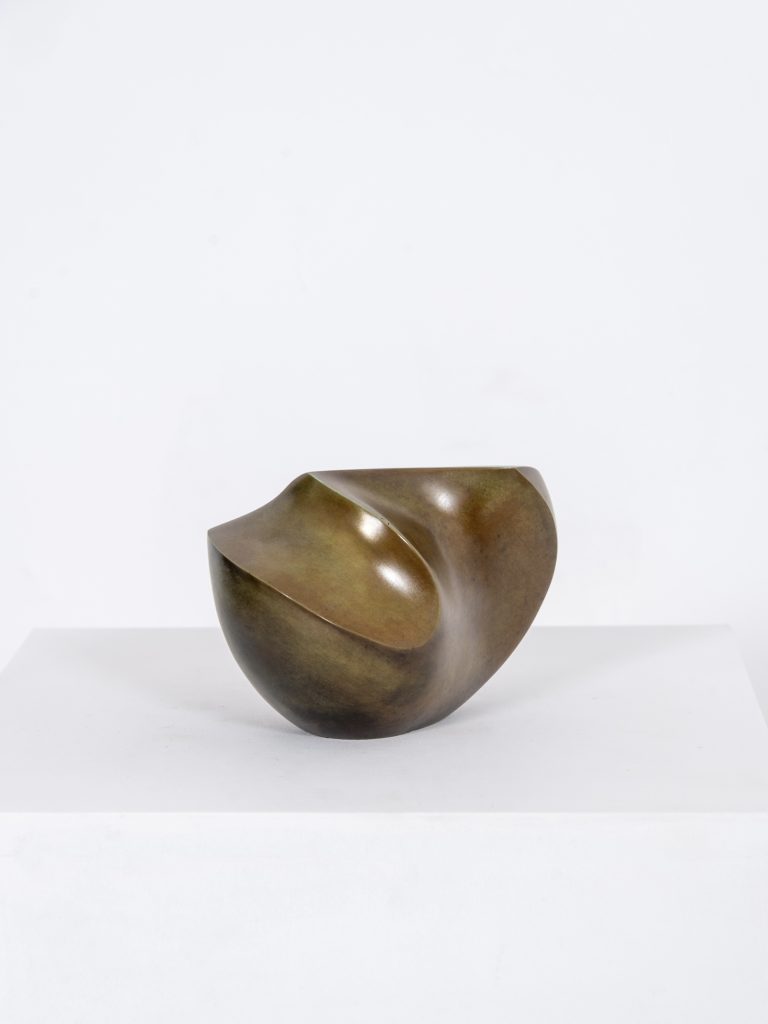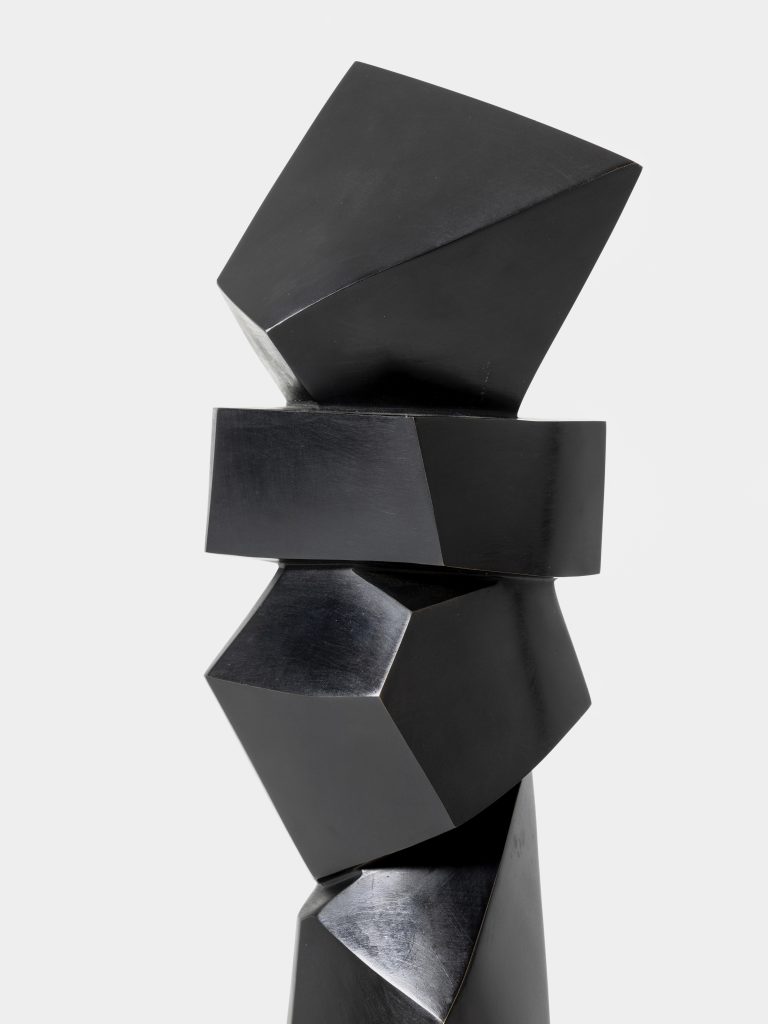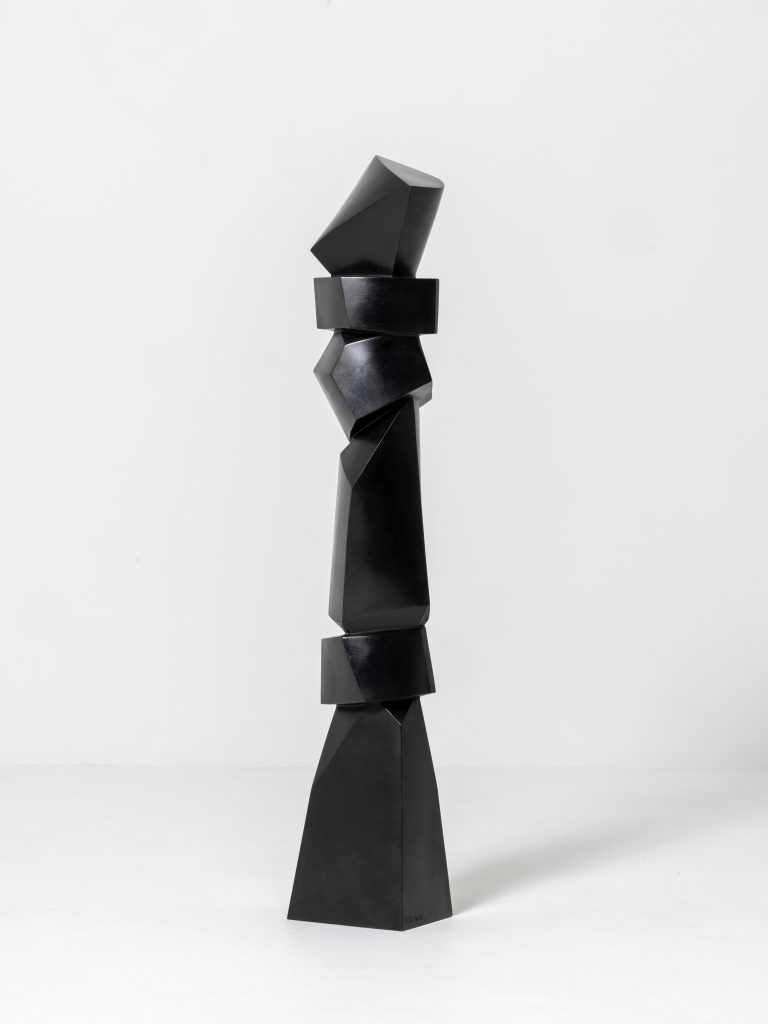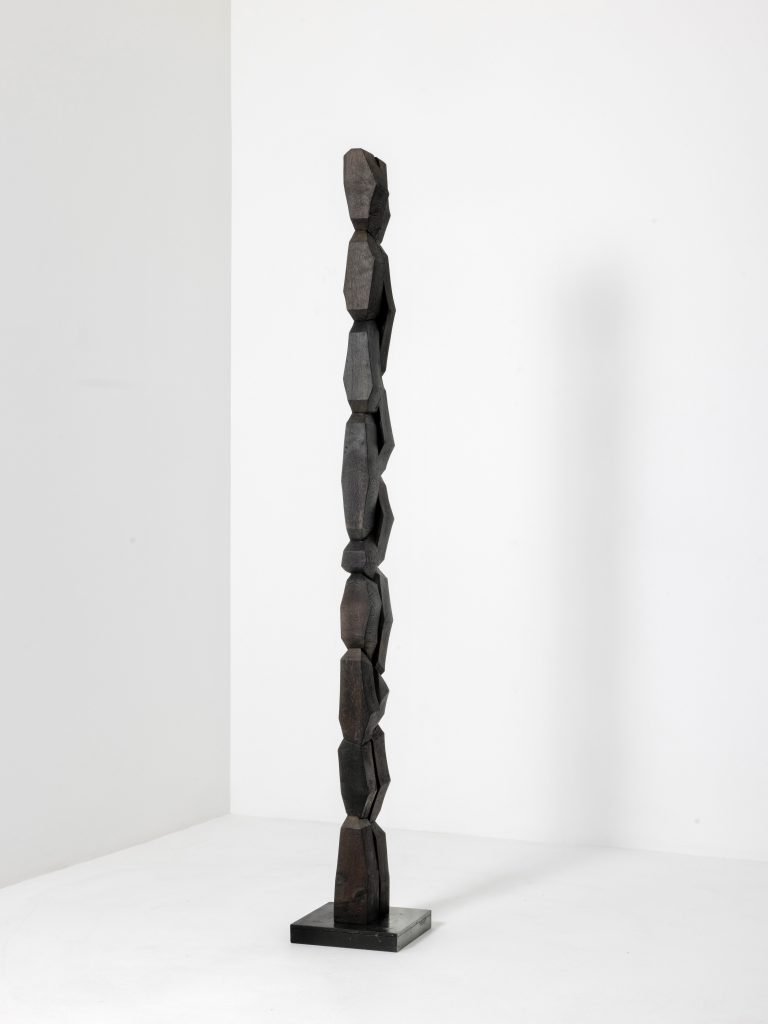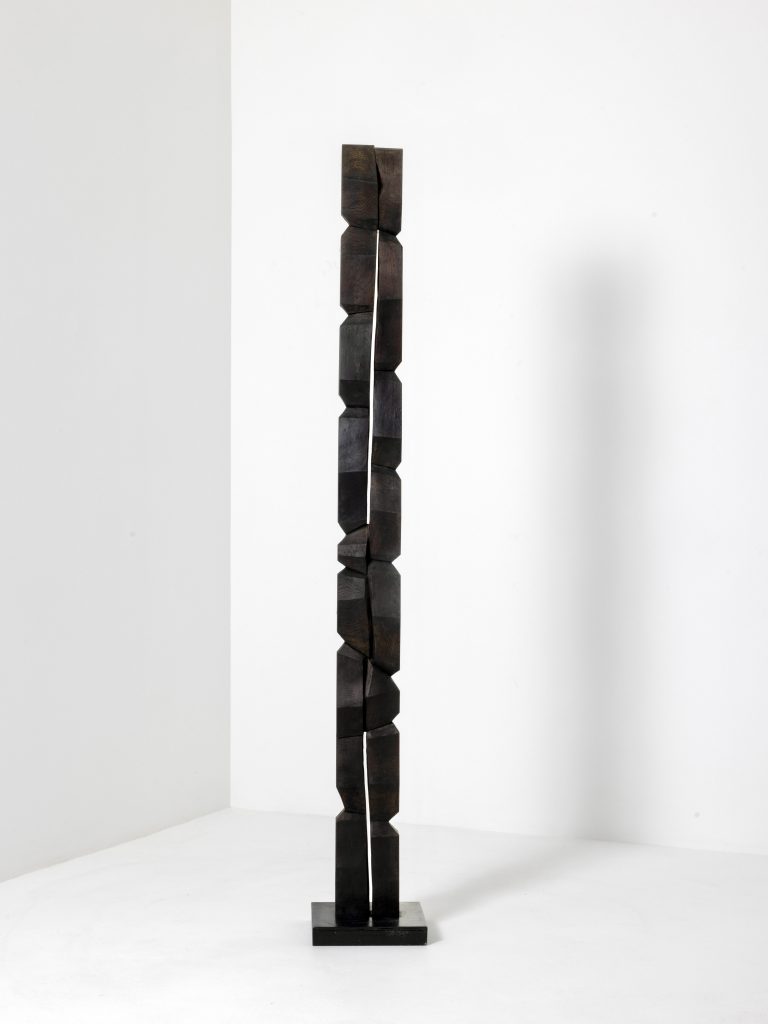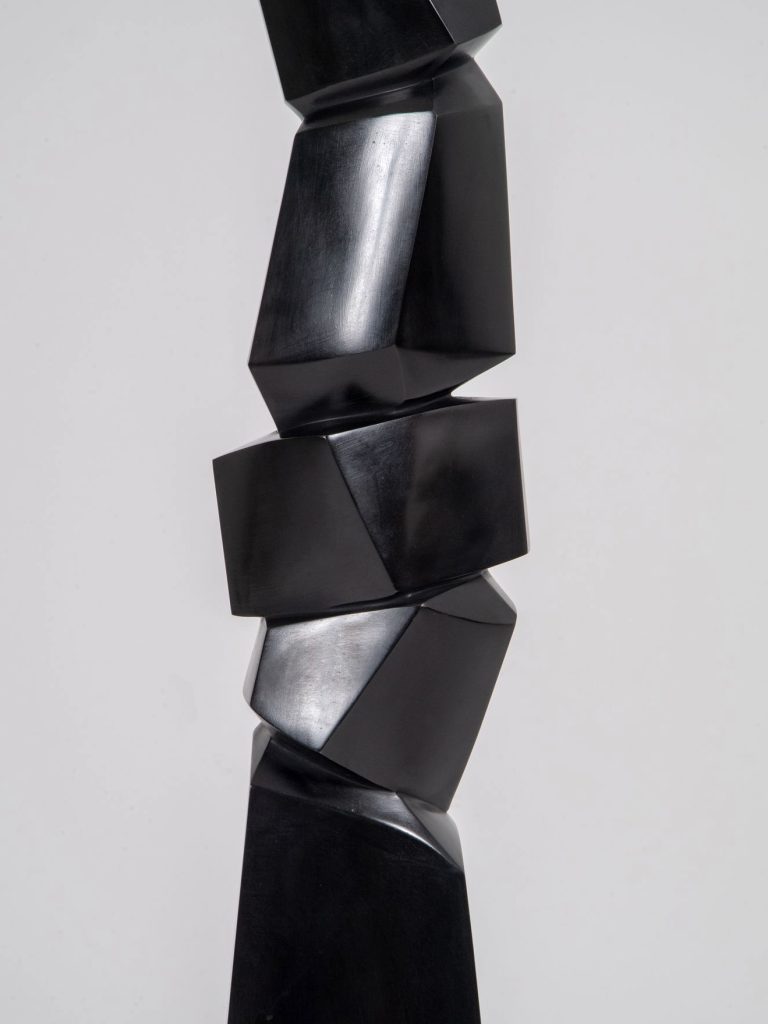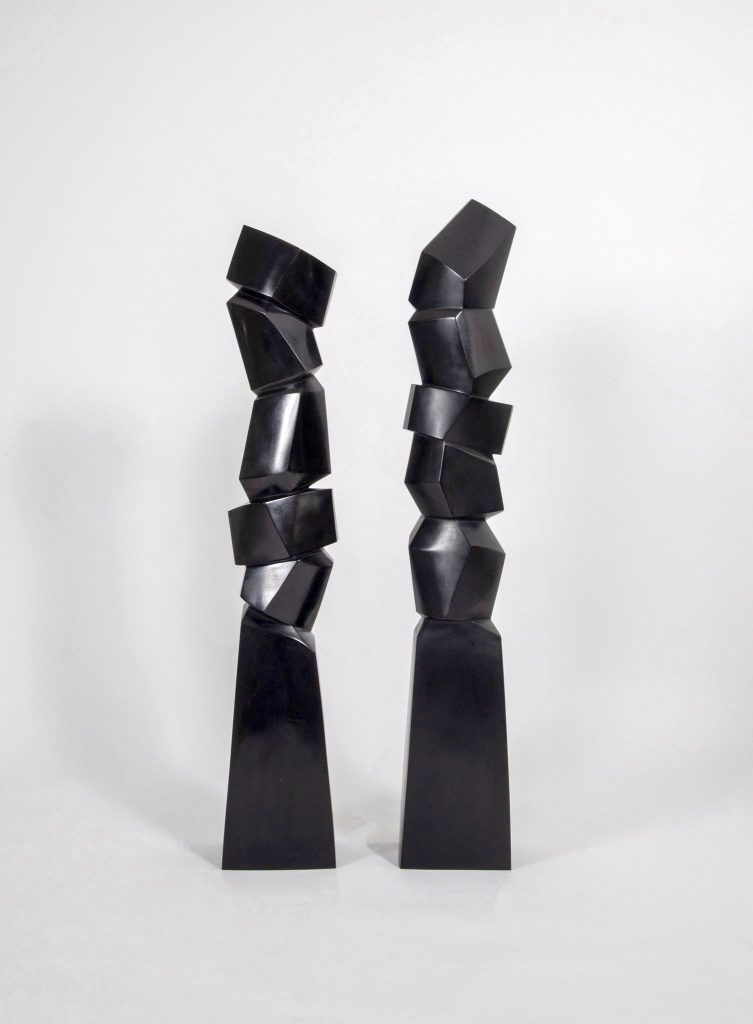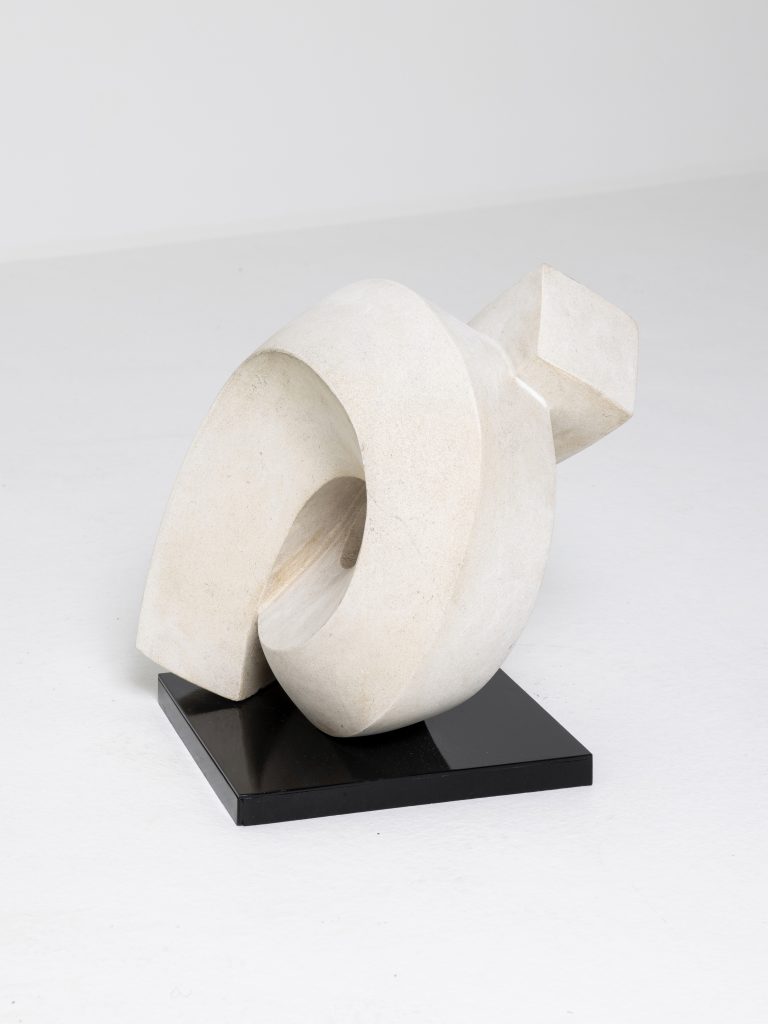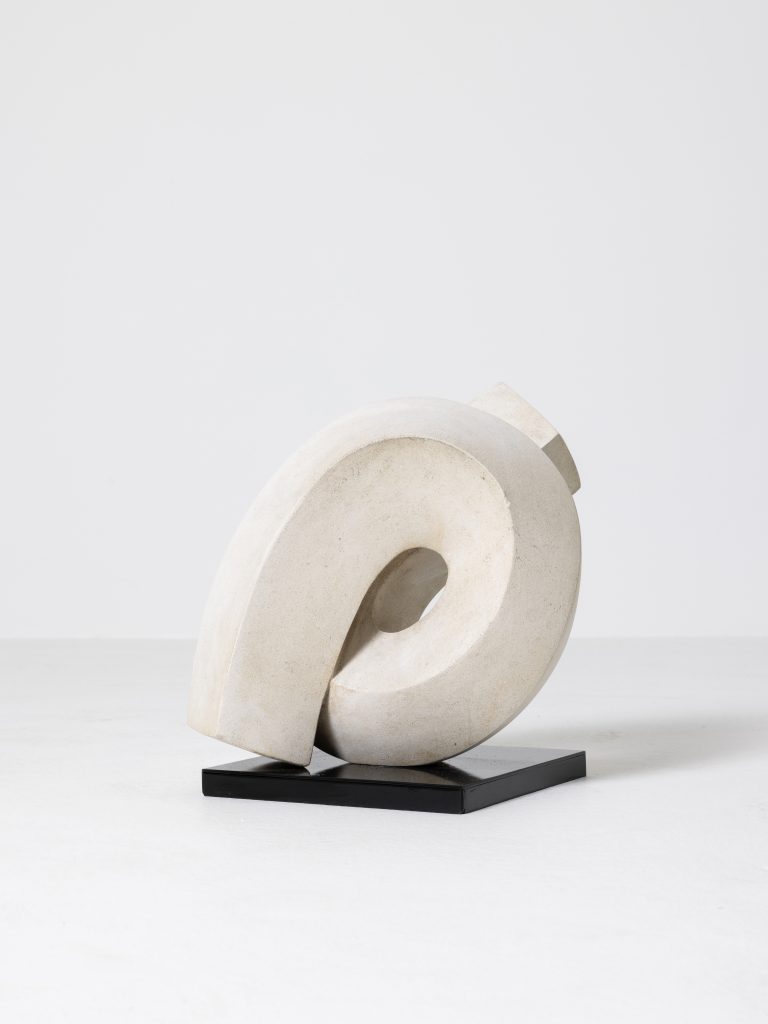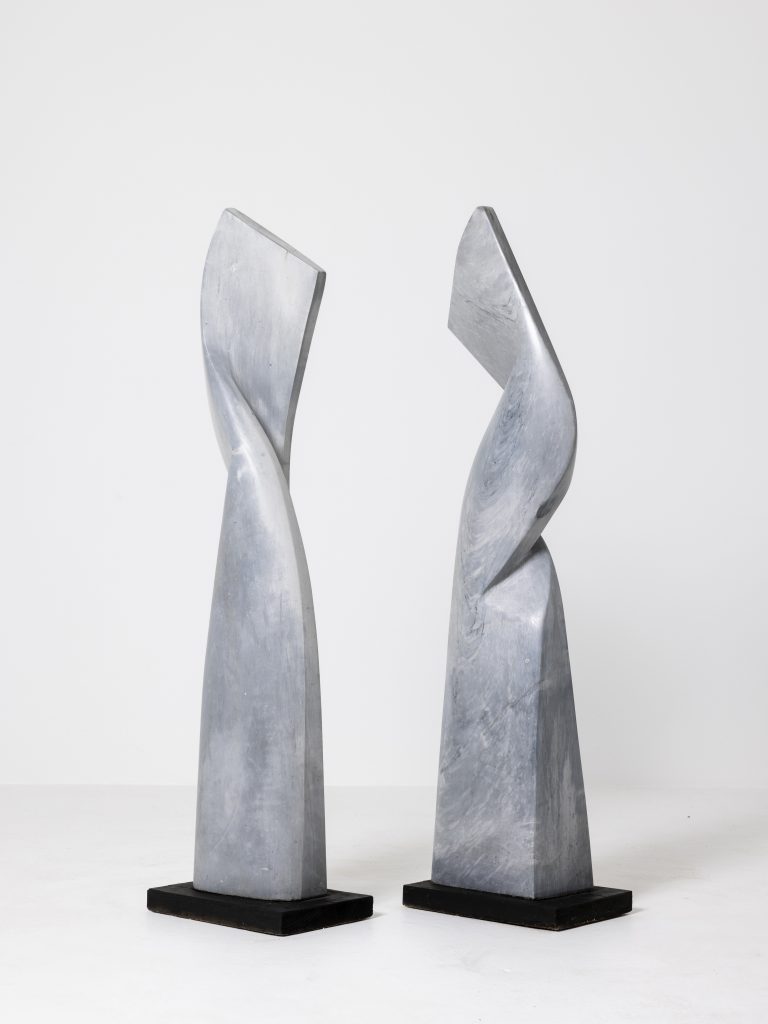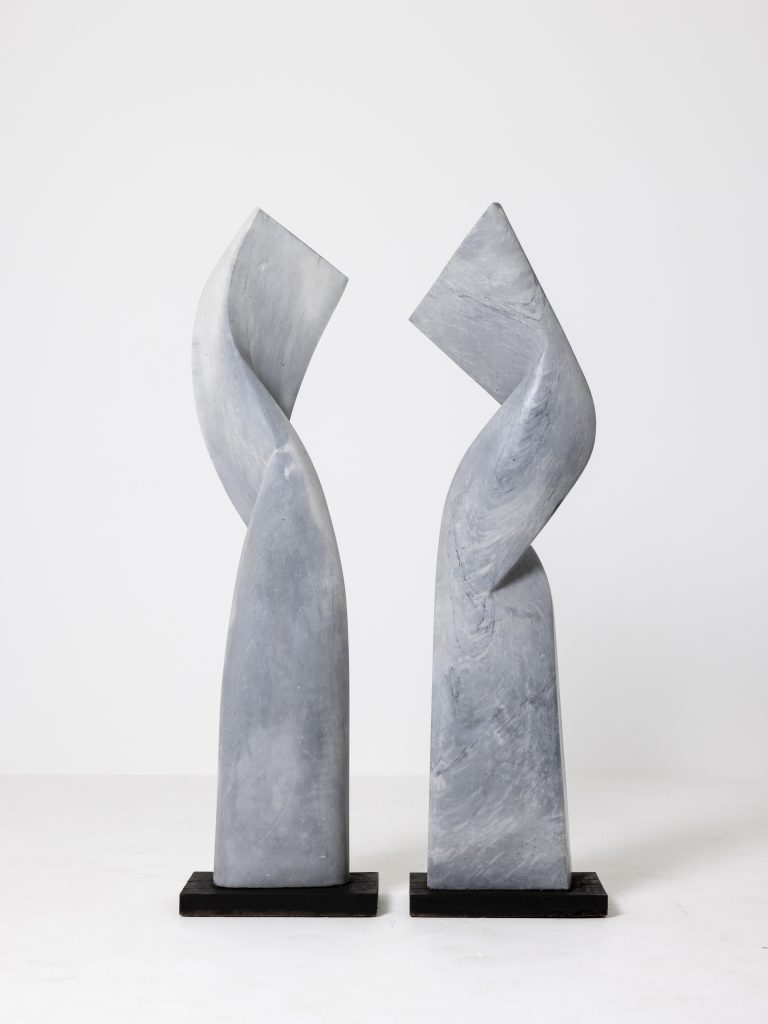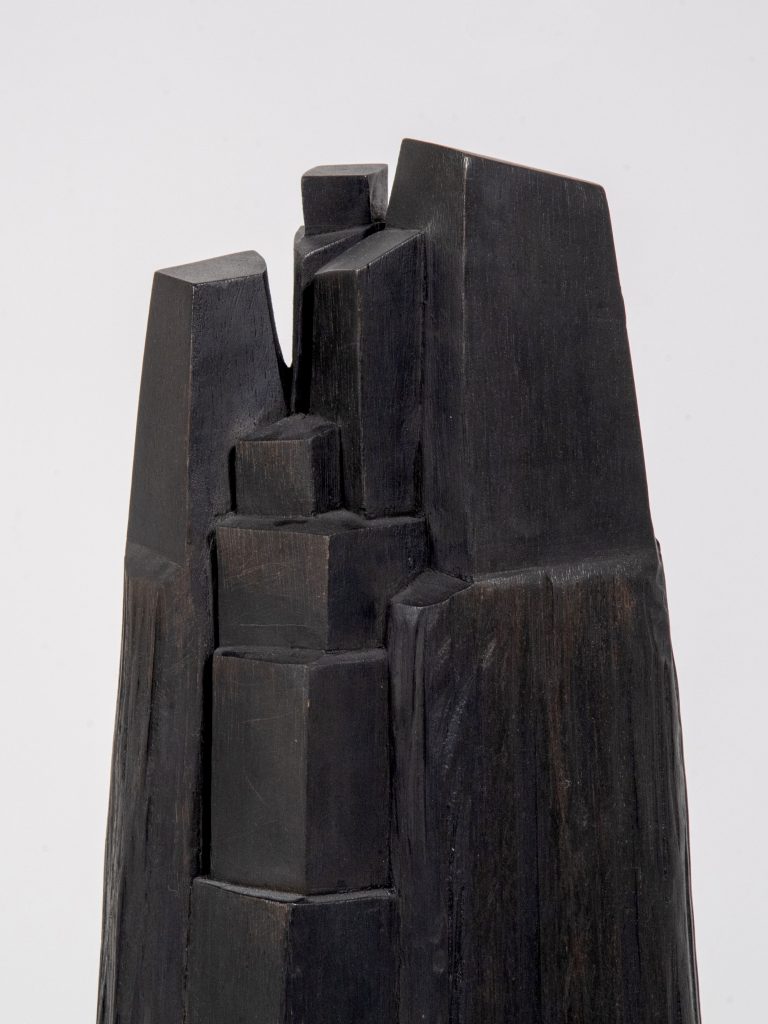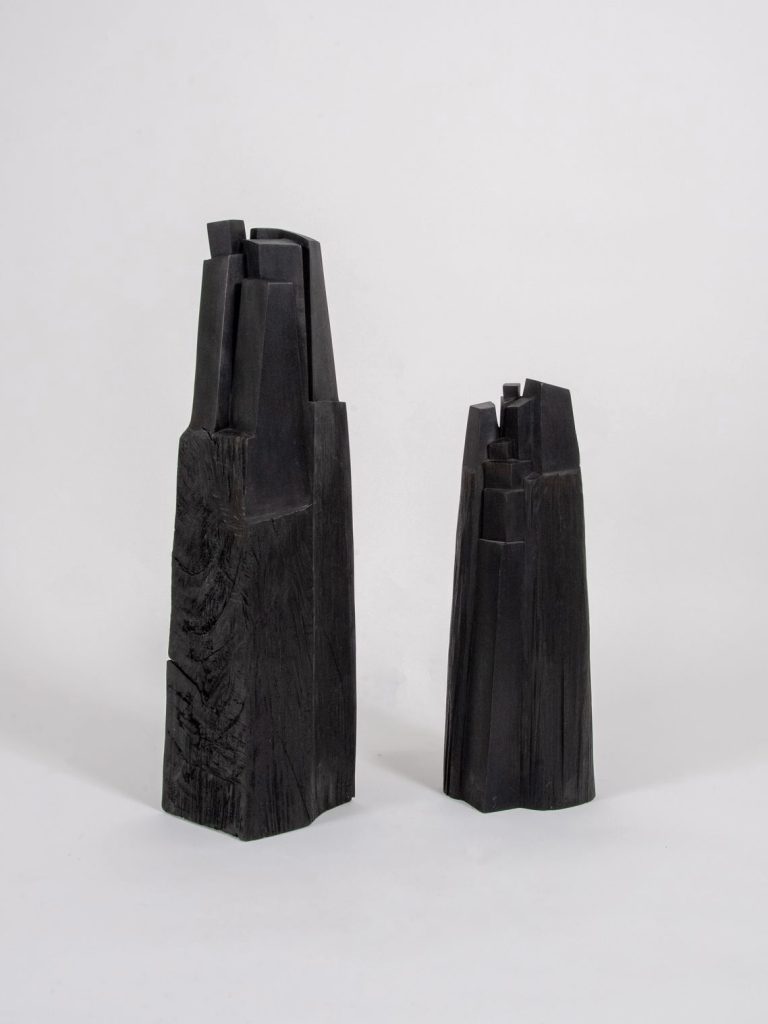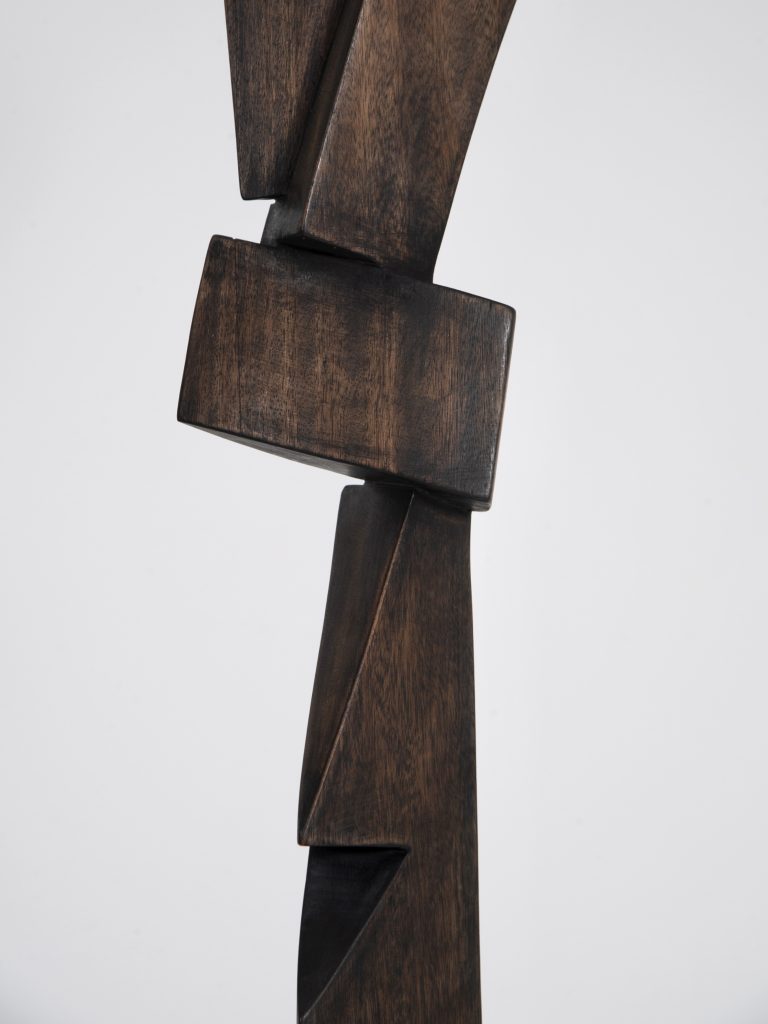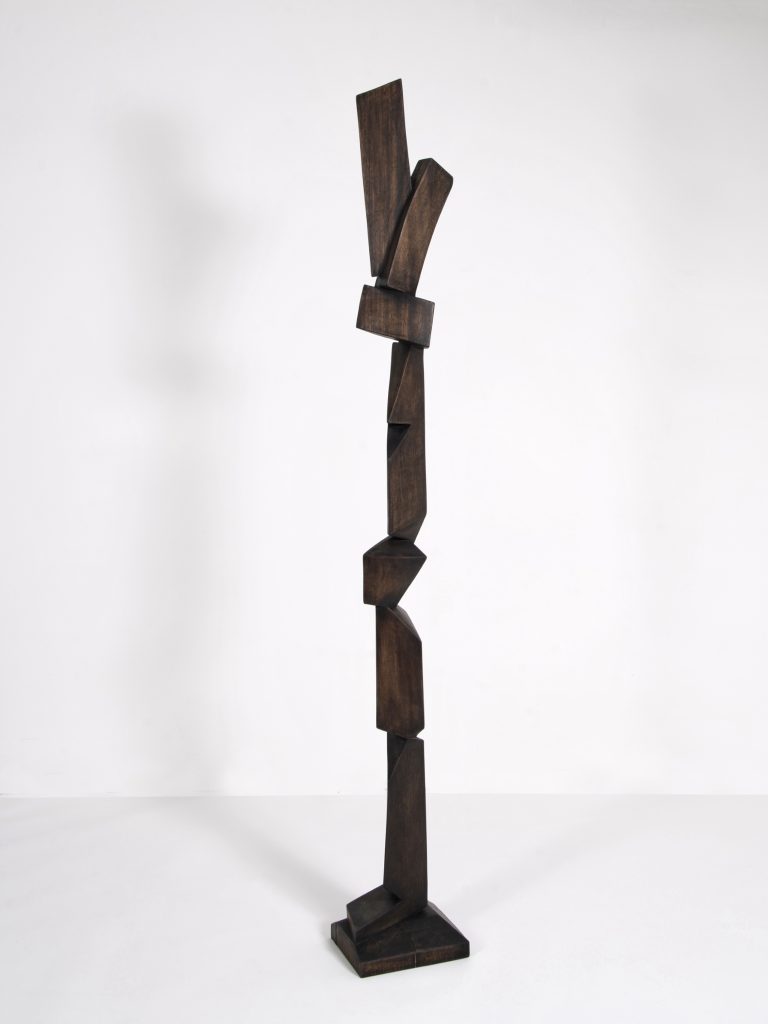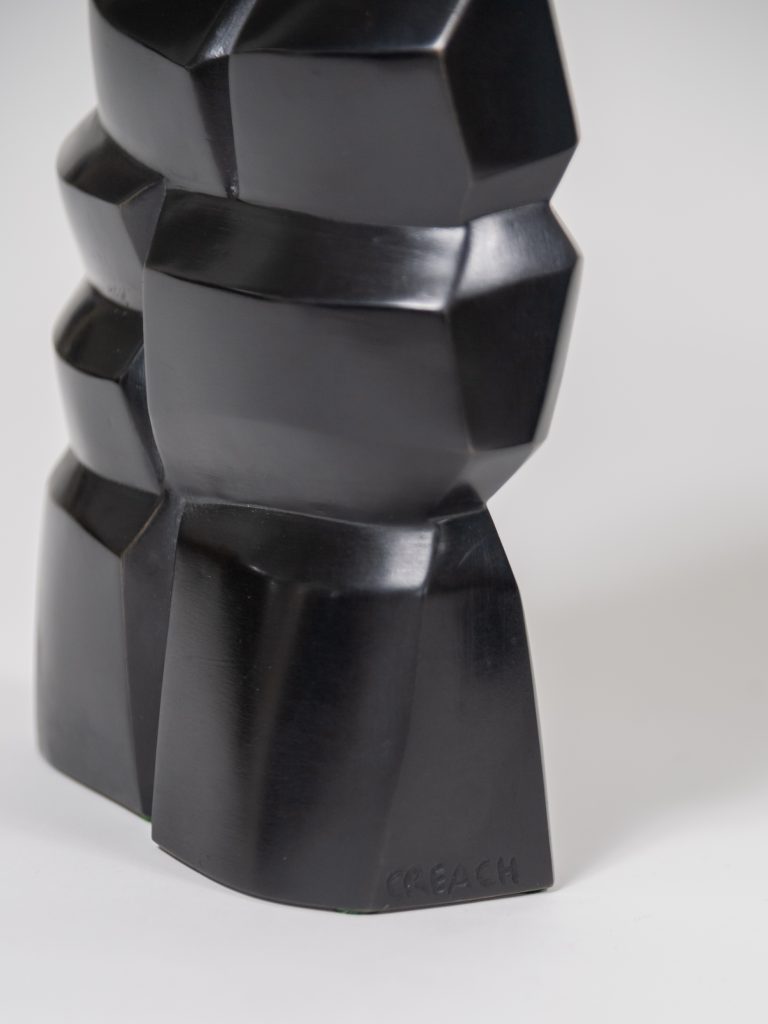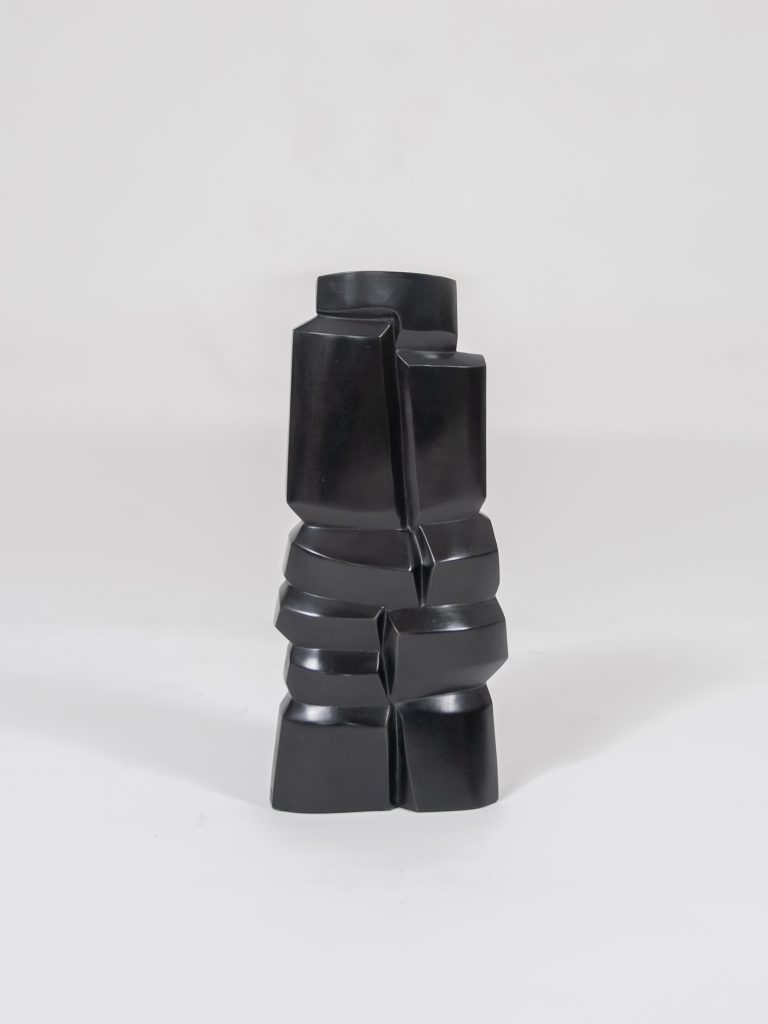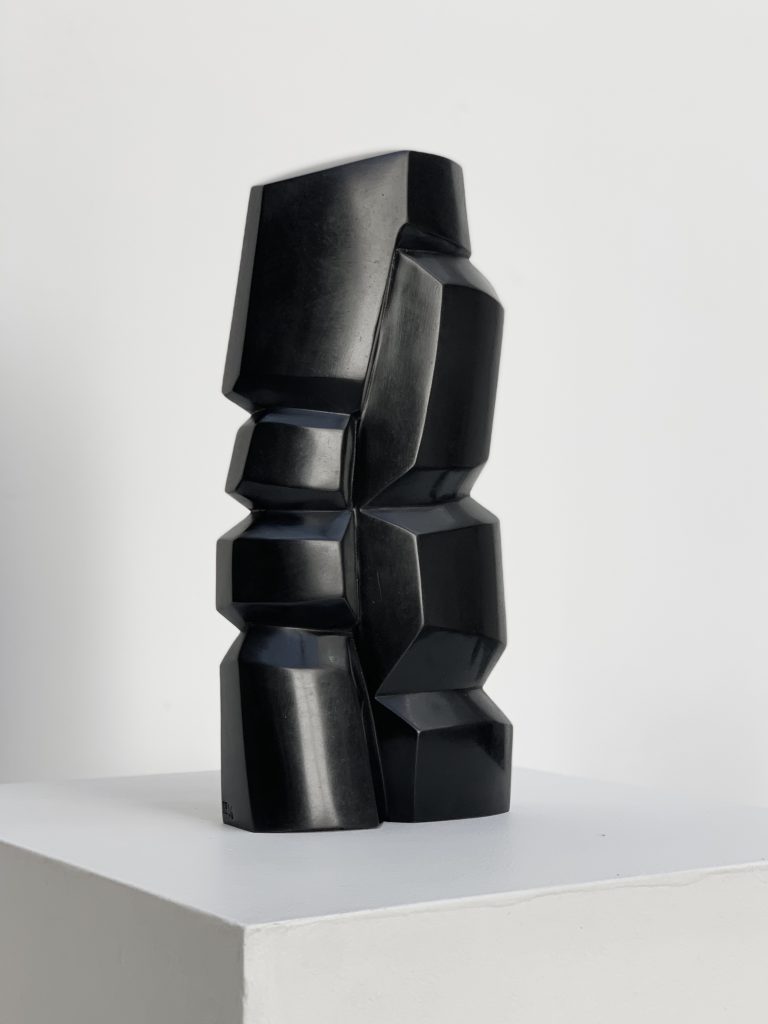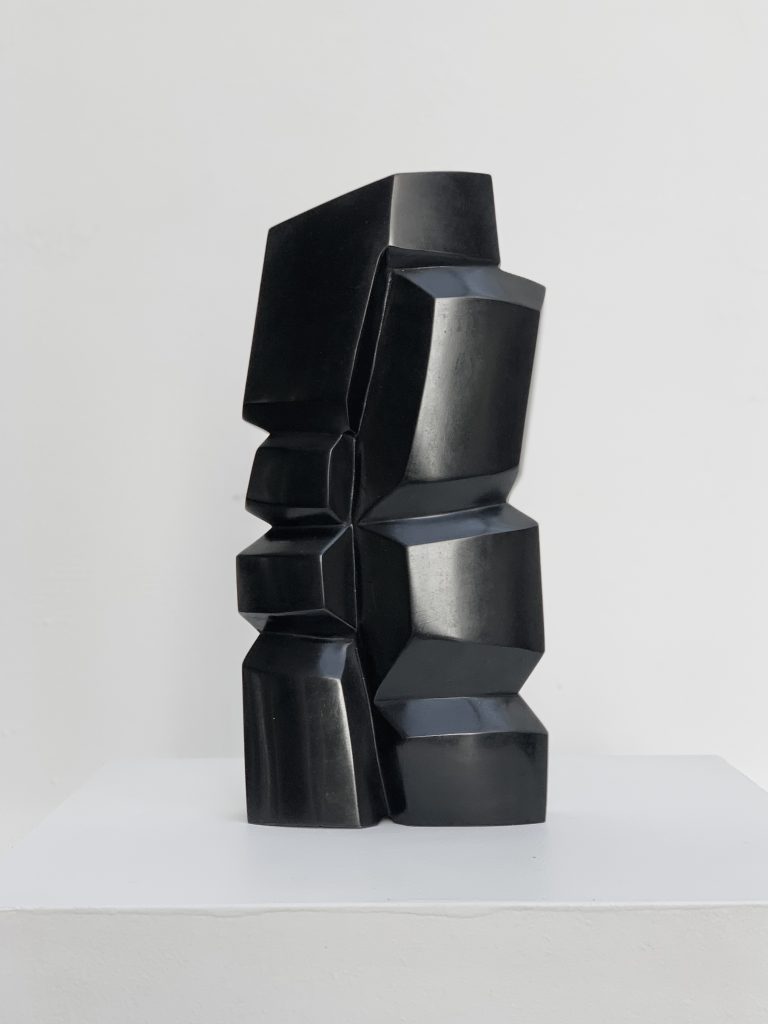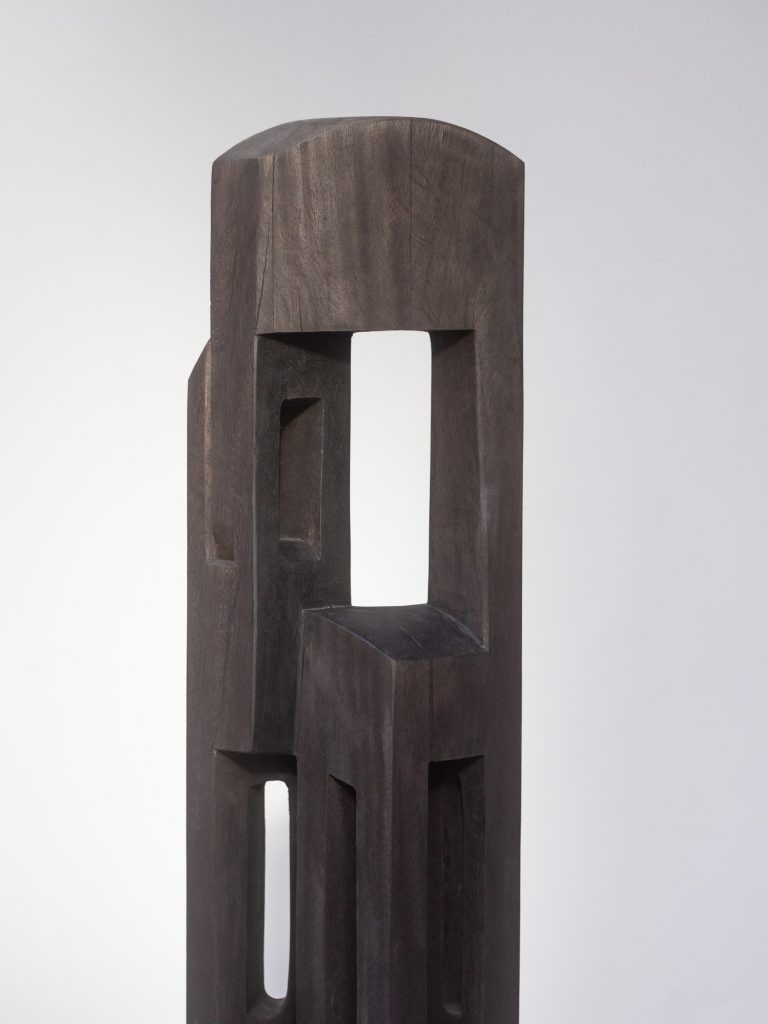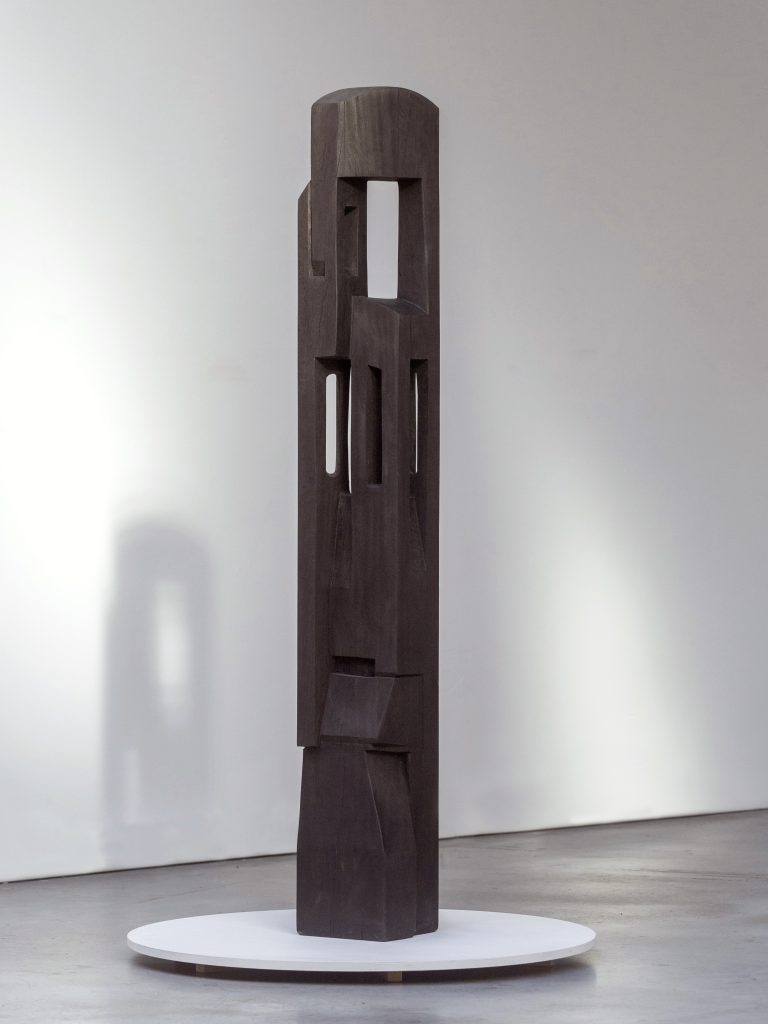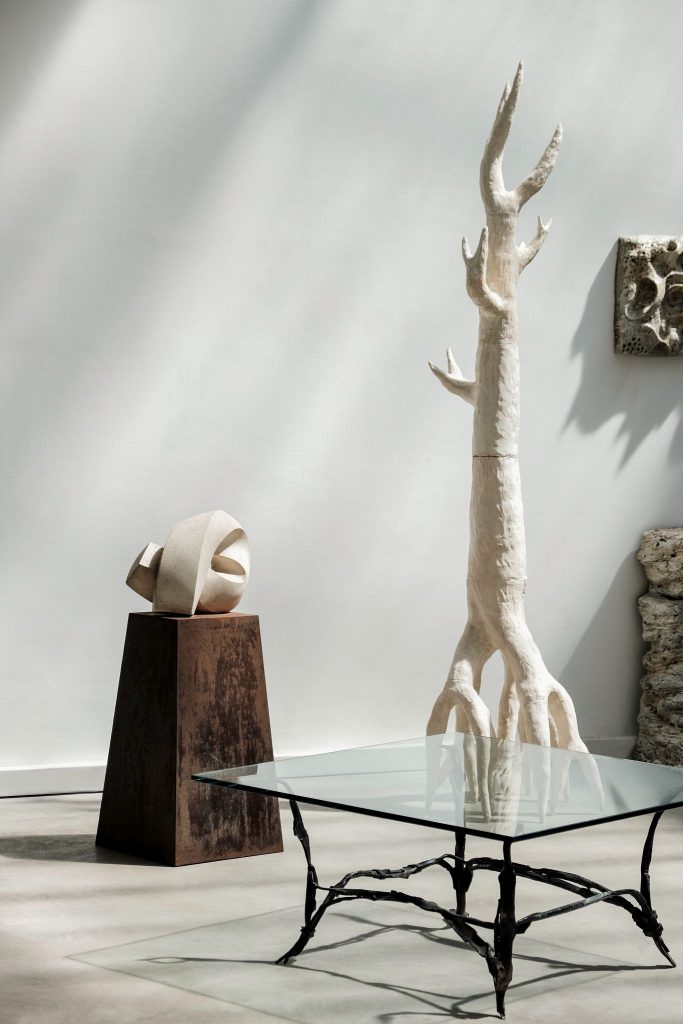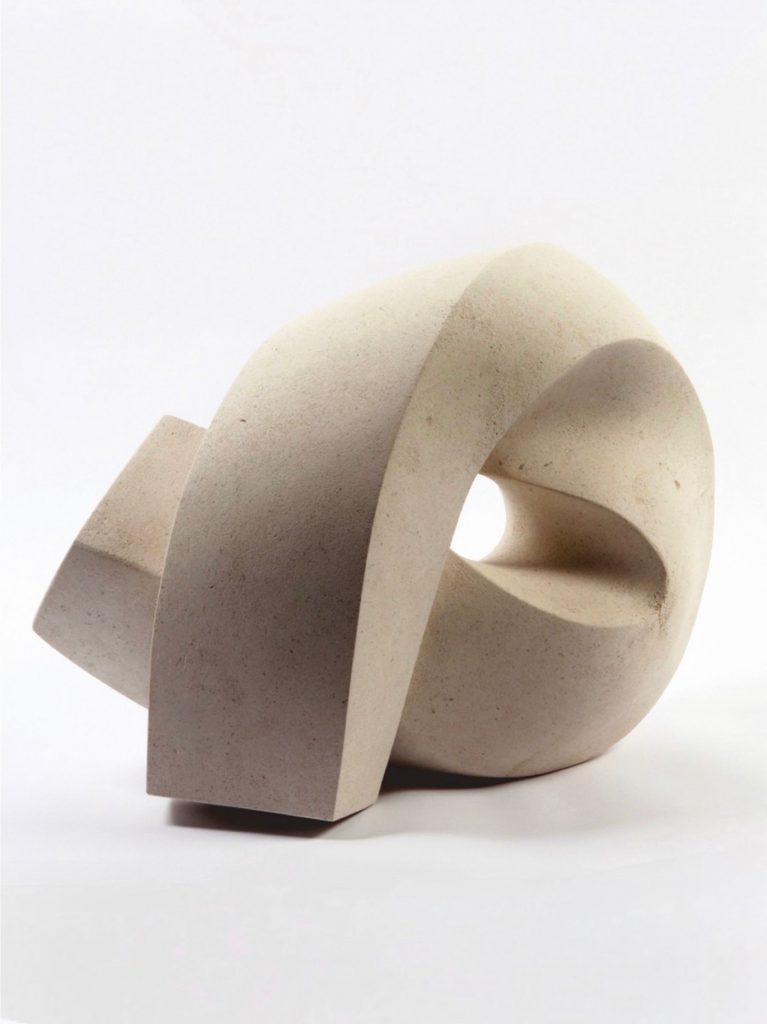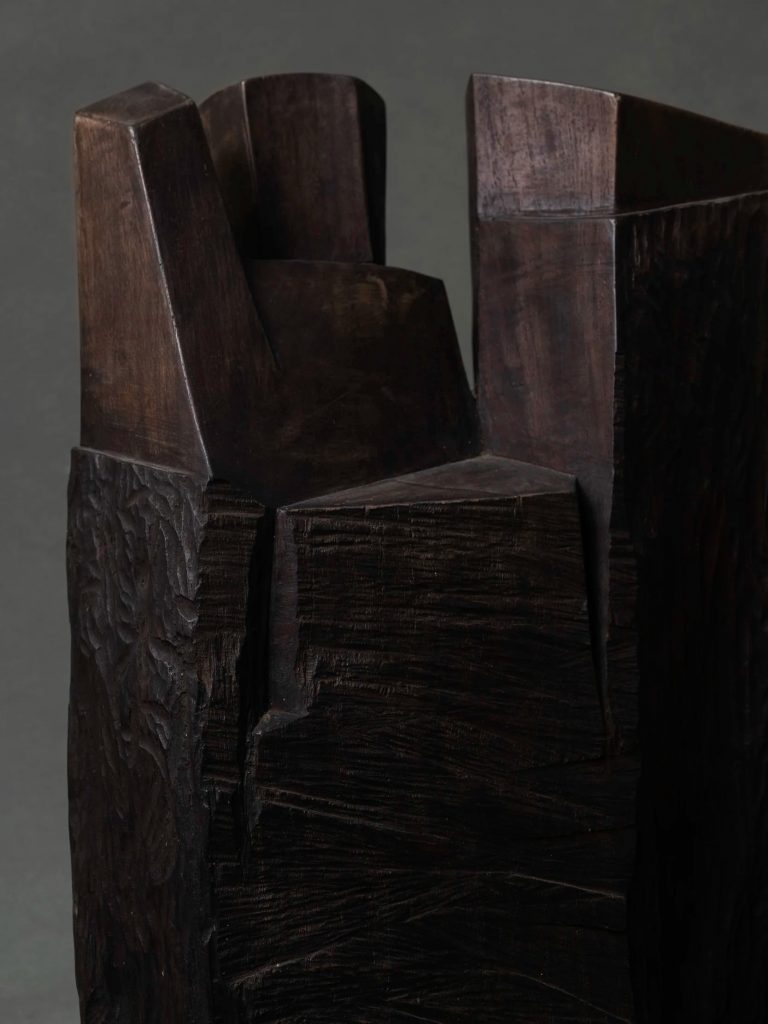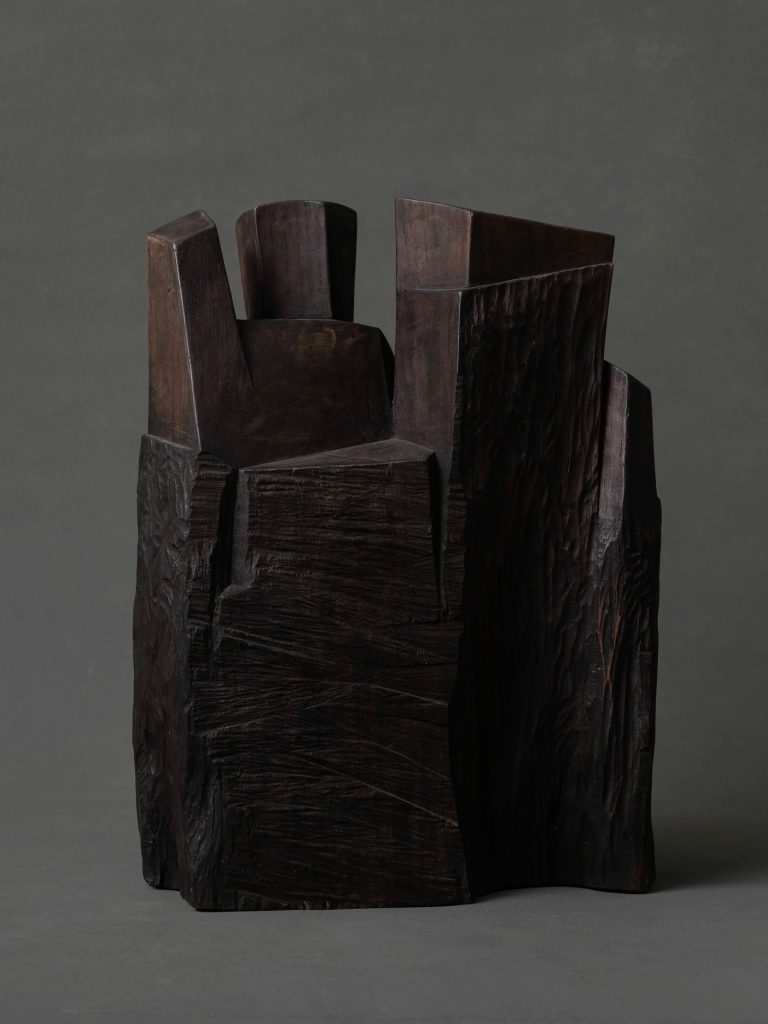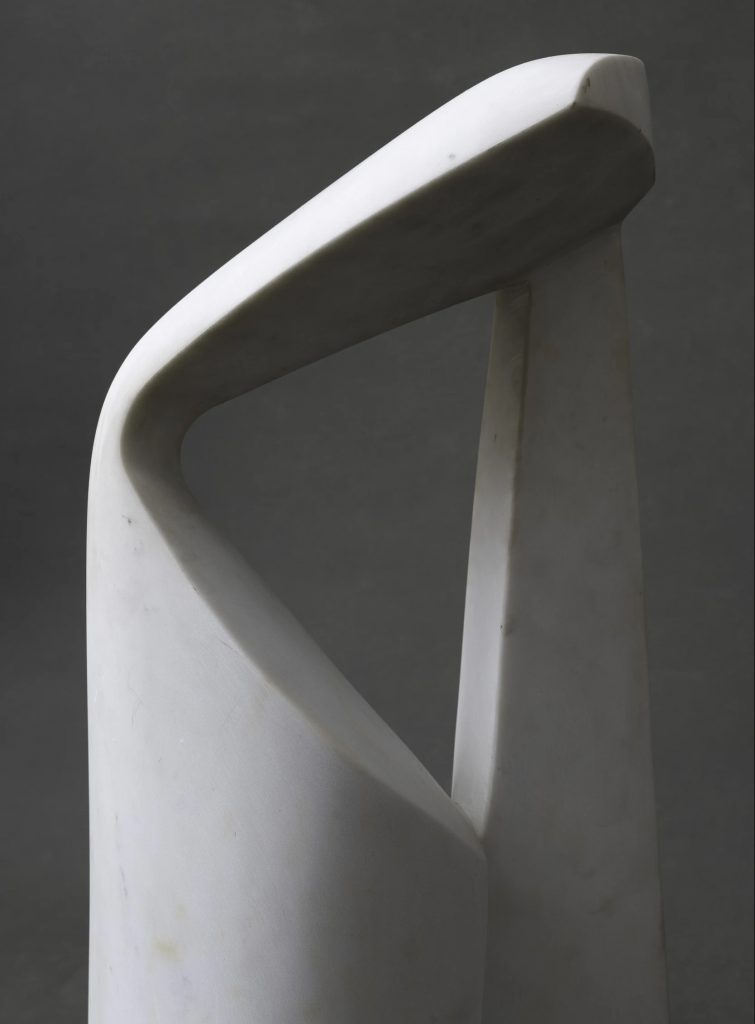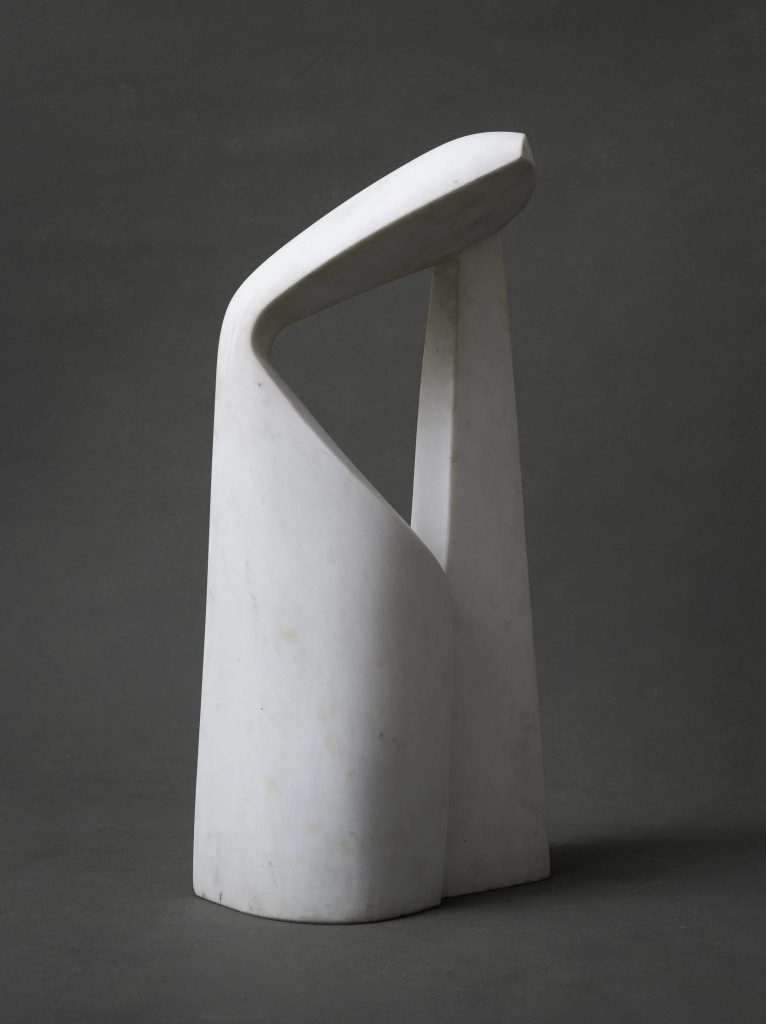Bertrand Créac’h
Bertrand Créac’h (1947–2022) was a French sculptor whose practice fused refined craftsmanship, contemplative abstraction and a strong connection to nature. Trained at the École Boulle in Paris, he was introduced early on to a circle of influential figures, including Étienne Martin, François Stahly, and Michel Seuphor, whose support helped shape the beginnings of his sculptural journey. Over the decades, he developed a vocabulary of form grounded in geometry but deeply sensitive to texture, light and materiality. His work has been shown in numerous solo and group exhibitions across Europe, while several of his sculptures have entered museum collections and taken their place in public spaces throughout France—testament to both his artistic resonance and his lasting dialogue with the built and natural environment.
A recurring concern in his work is the sacred or spiritual dimension: his “Refuges,” “Totems,” “Montagne,” “Élévation,” among others, evoke places of retreat and reflection. In many pieces, mass and void interact—solid volumes carved in such a way that light plays across their surfaces, leading the viewer’s gaze along curves, edges and planes. Besides form and material, touch and tactility are central to Créac’h’s approach. He created tactile works and installations (for example for children’s workshops at the Pompidou Museum in Paris) that invite physical engagement. He often works in marble, wood, bronze and stone—choosing materials that allow depth, gravitas and a resonance with nature’s textures. Though abstract, his forms are not removed from place: the natural environment, simple geological forms (rocks, hills, cliffs), and the sense of landscape inform much of his visual language. The works tend to anchor themselves in the material world even as they gesture toward the transcendent.
